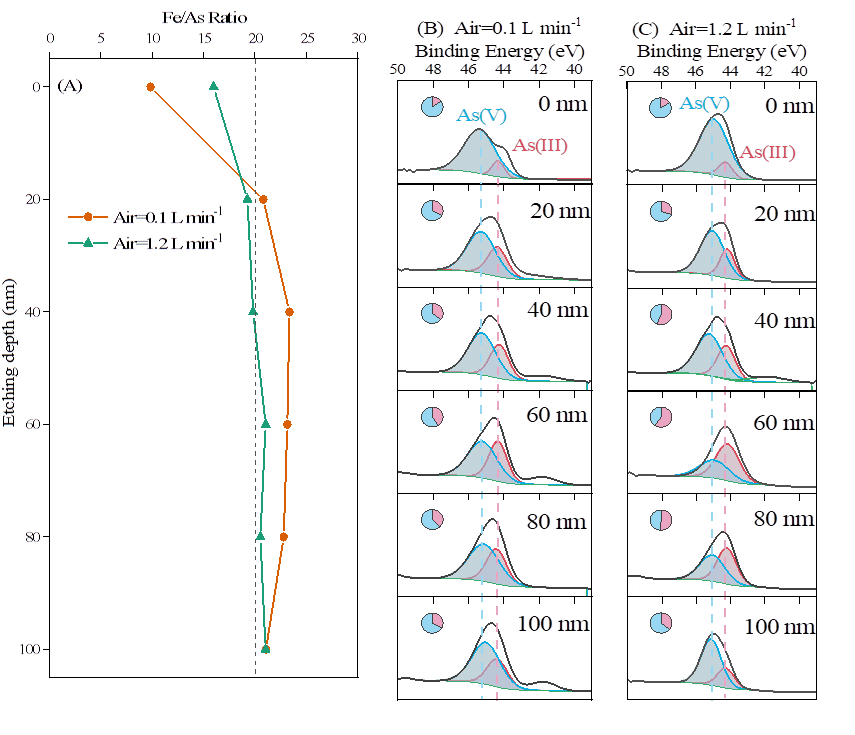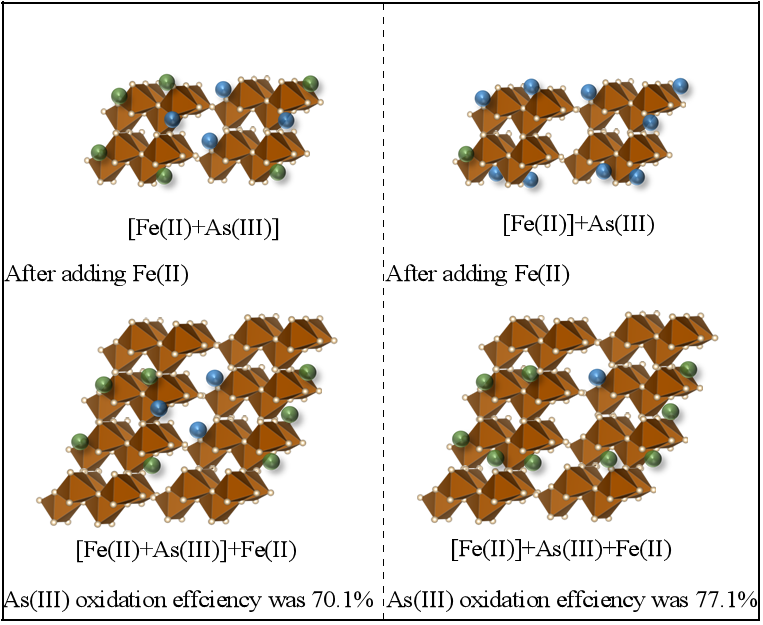


(通讯员 张鑫)近日,bat365中文官网土壤化学与肥力团队在有氧环境中亚铁氧化调控亚砷酸根环境行为方面取得新进展,相关成果以“Effects of Fe(II) on As(III) oxidation in Fe(II)-As(III) co-oxidation: limiting and driving roles”为题在Journal of Hazardous Materials发表。研究成果揭示了在土壤根际环境或有氧地下水环境,亚铁氧化调控污染物砷的氧化过程,为深入理解亚铁氧化介导污染物的氧化行为提供了新认识。
土壤和水体的砷(As)污染对人类健康构成了严重威胁。相比于As(V),As(III)具有更强的毒性和可移动性,As(III)氧化被视为砷毒性衰减过程。环境中的亚铁(Fe(II))在有氧条件与其氧化形成的铁氧化物发生类Fenton反应,生成氧活性物种(ROS),进而驱动As(III) 氧化。然而,Fe(II)氧化形成的铁氧化物可能又会影响As(III)与ROS的反应活性,限制As(III) 氧化。那么,Fe(II)氧化是As(III)氧化的驱动还是限制因素,目前相关研究缺乏。
基于此,通过模拟不同条件下Fe(II)和As(III)的氧化过程,课题组研究发现,Fe(II)与铁氧化物发生类芬顿反应产生的ROS驱动了As(III)的氧化,特别是•O2−和H2O2是As(III)氧化的重要ROS。但是快速的Fe(II)氧化导致As(III)更易被形成的铁氧化物“包被”,进而限制了As(III)与ROS的反应活性(图1)。这些结果提供了有氧环境中Fe(II)氧化在驱动或限制As(III)氧化过程中新的见解,对深入认识土壤等环境中金属元素的环境地球化学行为具有重要的意义。

图1 铁氧化物不同深度Fe/As摩尔比(A)及As价态分布(B)(C)

图2 As(III)位于铁氧化物不同位置时As(III)氧化反应示意图
bat365中文官网博士研究生张鑫为论文第一作者,付庆灵副教授为论文通讯作者,胡红青教授、朱俊副教授和理学院刘永红副教授参与了该项研究。本研究得到了国家自然科学基金联合基金的资助。
审核人:付庆灵
英文摘要:
The co-oxidation of Fe(II) and As(III) occurs under aerobic conditions, and Fe(II) may largely determine the fate of As(III), but the effect of Fe(II) on the As(III) oxidation is barely explored. In this research, the limiting and driving roles of Fe(II) in As(III) oxidation were systematically studied through batch kinetic studies in combination with X-ray photoelectron spectroscopy (XPS) depth profiling, scanning electron microscopy and energy dispersive X-ray spectrometry (SEM-EDS), and quenching experiments. The results showed that As(III) oxidation efficiency increased with the increase of Fe/As molar ratio (from 63.1% to 98.3%), but decreased with the increase of pH (from 96.0% to 44.2%) and the increase of air flow rate (from 88.1% to 75.1%). The Fe(II) oxidation rate increased with the increase of pH and air flow rate. When Fe(II) was oxidized rapidly, As(III) was more likely to be immobilized in the “inner sphere” of formed Fe (hydr)oxides, limiting As(III) oxidation. On the other hand, Fe(II) was oxidized to produce Fe (hydr)oxides to adsorb or fix As(III); meanwhile, the ROS generated by Fenton-like reaction of Fe(II) promoted As(III) oxidation, especially, •O2− and H2O2 were important ROS that drove the As(III) oxidation. These findings might provide a new insight for Fe(II) and As(III) geochemistry cycling in naturally occurring environment.
论文链接:https://www.sciencedirect.com/science/article/pii/S0304389423000729